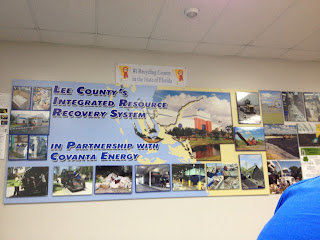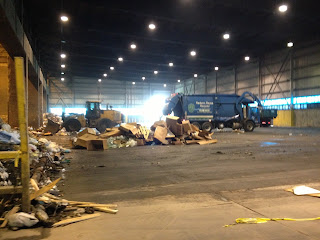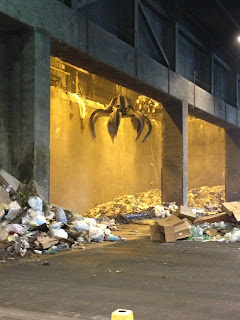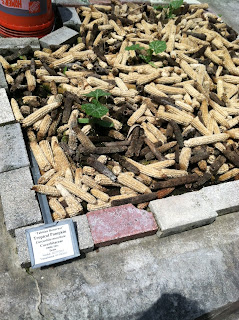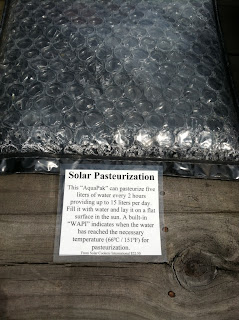In class we had a group present the top ten
fruits. I wrote down the top 5 and Meredith wrote about the final 5.
Top Ten Fruits
1. Mango-
-Stone fruit
-Grown in most frost-free tropical and warmer
subtropics
-They look like overripe plums and are
generally very sweet
-The skin and sap on the mango is related to
poison ivy.
2.Raspberry-
-Widely grown in all
temperate regions of the World.
-Midsummer crop
-Well-drained soil
-Raspberry leaves
can be used fresh or dried in tisanes
-They have an
astringent flavor
3.Strawberries-
-Plant in fall and in full sun
-8 hours everyday
-Need sun in order to fruit
-Don't like competition
-Plant seedlings on an overcast day, you want
to put them in rows.
4. Lychee-
-Now we are in the season for harvesting
-Addictive flavor
-Short self-life, sub tropical climate,
-They don't like wet feet
-They growth them in Centennial park, have a
forest of them.
-Native of china and Asia
5. Pecan-
-Need at be at least 40 feet apart and need
full sun. 30 feet away from any structures cause it needs maximum sunlight
-Needs good soil that has lots of nutrients
-It likes to have as much roots for the plant
to grow
-Plant it in the fall
-Mature trees are never pruned, but when they
are container plants you can prune them.
We learned how to keep our plants disease free!
Disease:
How to Keep Plants Healthy
-Control insect population
-Good air circulation
-Well-drained soil
-Touch plants as little as possible
-Keep plants well fed
-Crop rotation
Meredith:
6. Peach-
-Plant in full sunlight
-Elevated bed
-Well drained soil
7. Nectarine-
-Plant in full sunlight
-Elevated bed
-Well drained soil
8. Plum-
-Plant in full sunlight
-Elevated bed
-Well drained soil
Fun fact: peaches, nectarines, and plums are referred to as the stone fruits!
9. Passion Fruit-
-Purple or yellow in color
-Can grow up to 40 feet
-Plant in full sunlight
-Easy to manage
10. Pomegranate-
-Ingredient used in juices, jellies, wines, breads, and vitamins
-Most often grow as shrubs from 6 to 10 inches
-Plant in full sunlight
-Great source of Vitamin A, C, E
We also learned about equipment needed to spray for bugs in your garden.
-1 quart spray bottle for small gardens
-hose and sprayer for larger gardens
-pump sprayer for specific applications in a garden
Baking soda is also a good resource to use to get rid of disease in your garden and if the disease has spread too far, then copper will eliminate the fungus. It is important to remember that "an ounce of protection is worth a pound of cure."
Kristin-
I unfortunately, was unable to be in class last Tuesday, but after reading my other group members post I feel like I missed some great presentations and very useful information. Although, I was unable to attend class I did want to write on the blog about something I saw over the weekend. I turned on the T.V. the other day and a show was on that was talking about ways that US citizens are taking initiative on their own to go green. They showed a group of people in a major city "gorilla gardening". I thought this was really cool, because we talked about it in class, but seeing these people in action and what they do what pretty amazing. Basically, they all get together in the middle of the night and go find a vacant patch of land somewhere, and overnight they rip up the land, put in plants, and turn the piece of land into a fully functioning garden. It was so amazing to watch. These people are volunteering and donating their time to make their city better. The show even interviewed some of the people and they said that it is illegal, but the police pretty much leave them alone, because they know that it is a good thing for the city. In addition, they said that the city mayor even came out one night and gave them hand wipes and donuts. They ended the interview by talking to the main guy that kind of started the whole group. He has been gorilla gardening for almost 13 years!!!! HOW AWESOME!!! They went to his house and his back yard was like a huge forest!! He planted and raised all of the plants that they used to make the gardens on the vacant lots! I thought their story was truly amazing and so inspirational that I had to share.
Christian-
In class we listened to presentations again. Groups talked about plants that do well in SW Florida. Some of them were mangos, pecans, raspberry, strawberries, plums and peaches. One group even brought in food they talked about in their presentation. They brought pecans, macadian nuts, mangos, and some others. Another group talked about plant disease and how to prevent it. I learned that copper can cure almost anything. However preventing these diseases is much easier than trying to cure them. Durning the second half of class Professor talked about staying healthy and what he does in his life to take care of his body. This made me realize maybe I should try a little harder to treat my body right.
